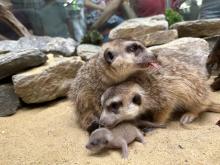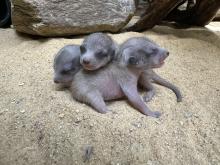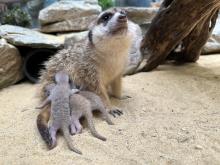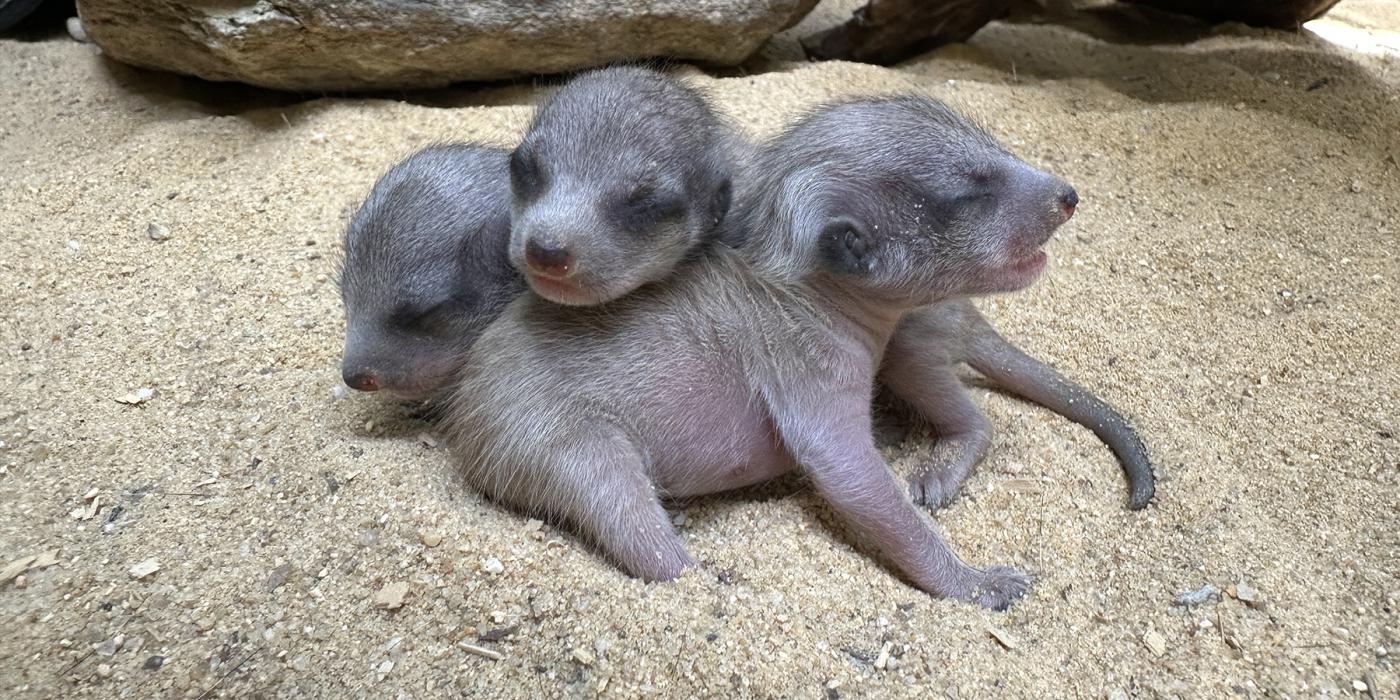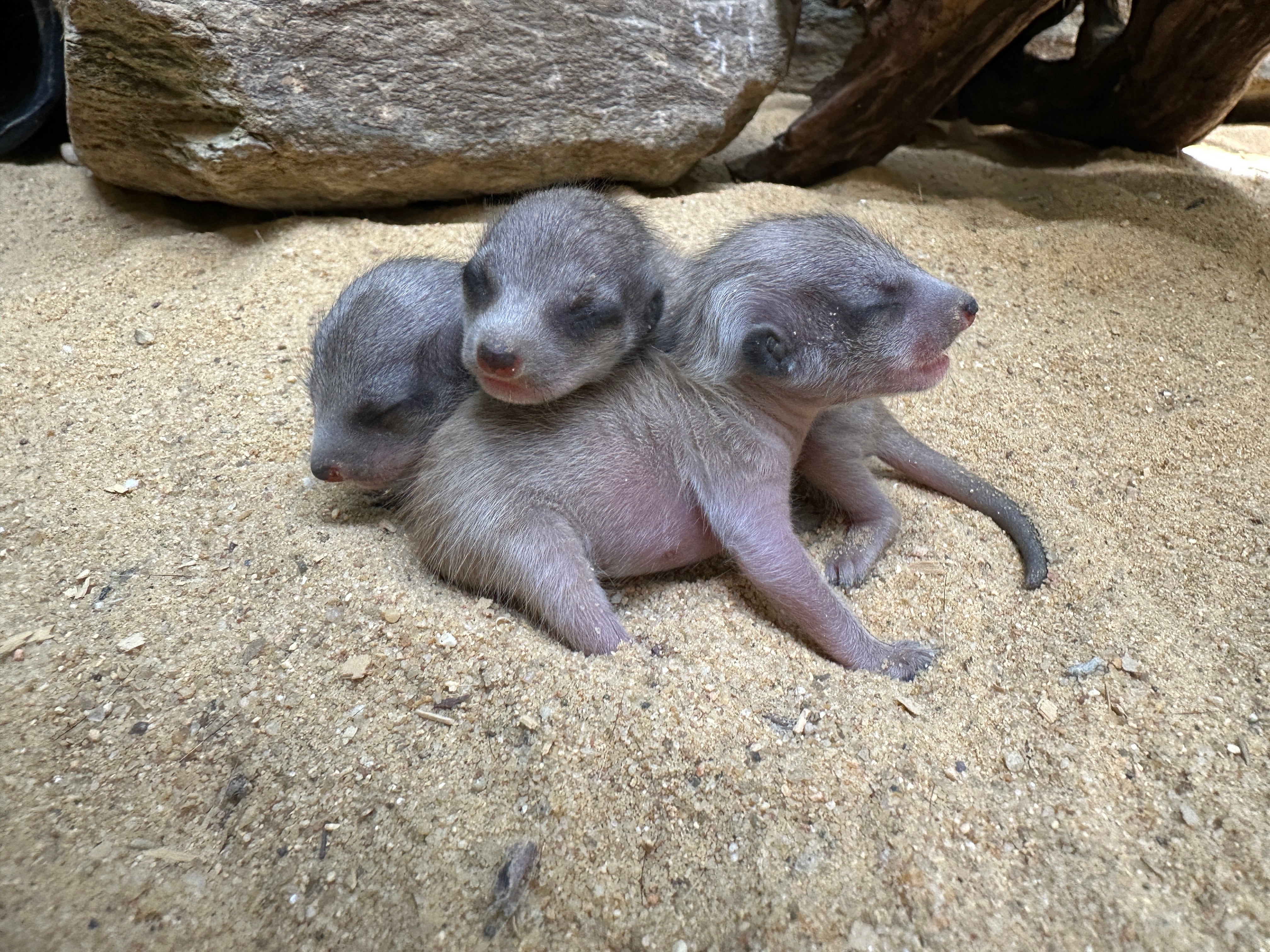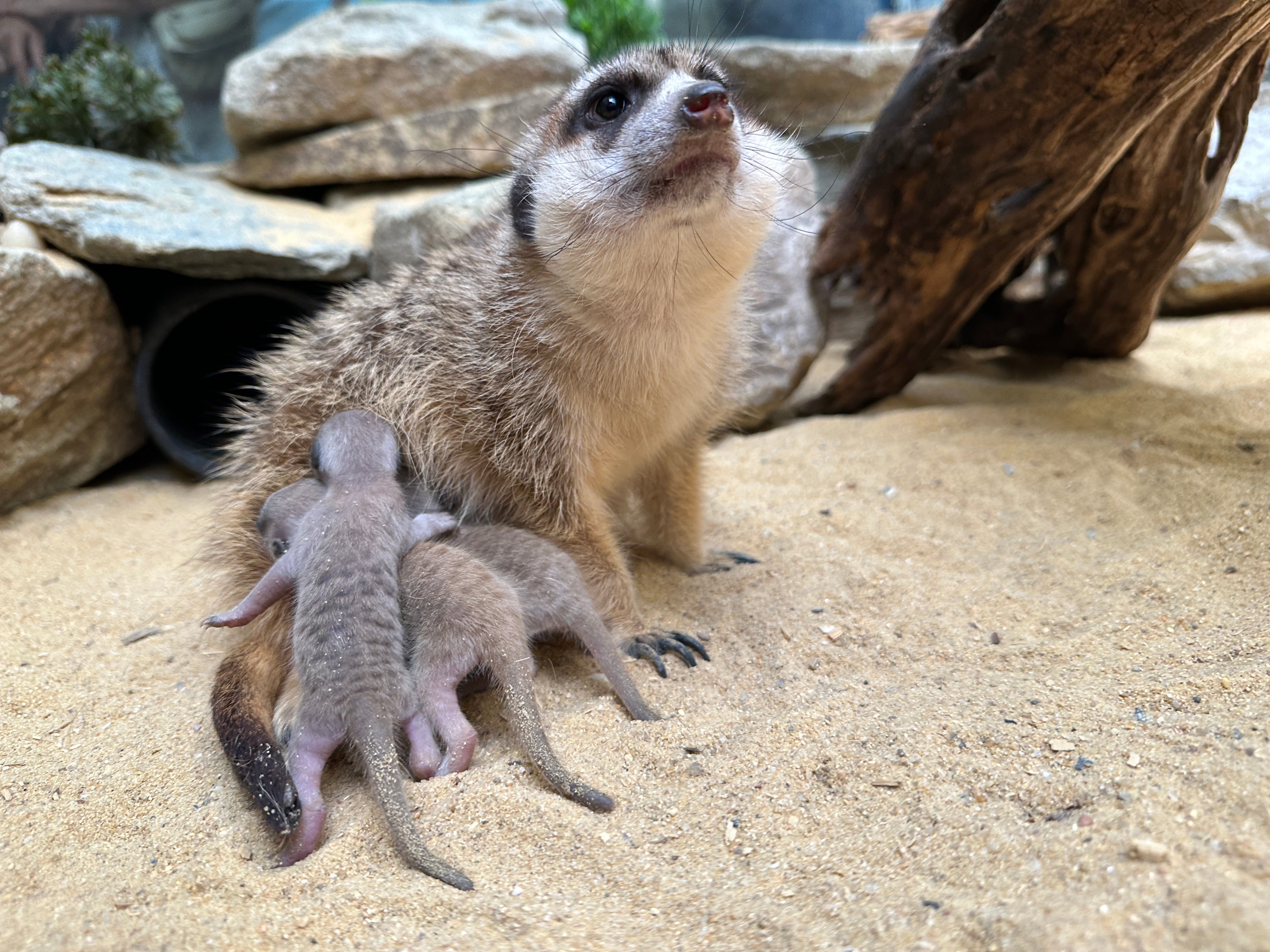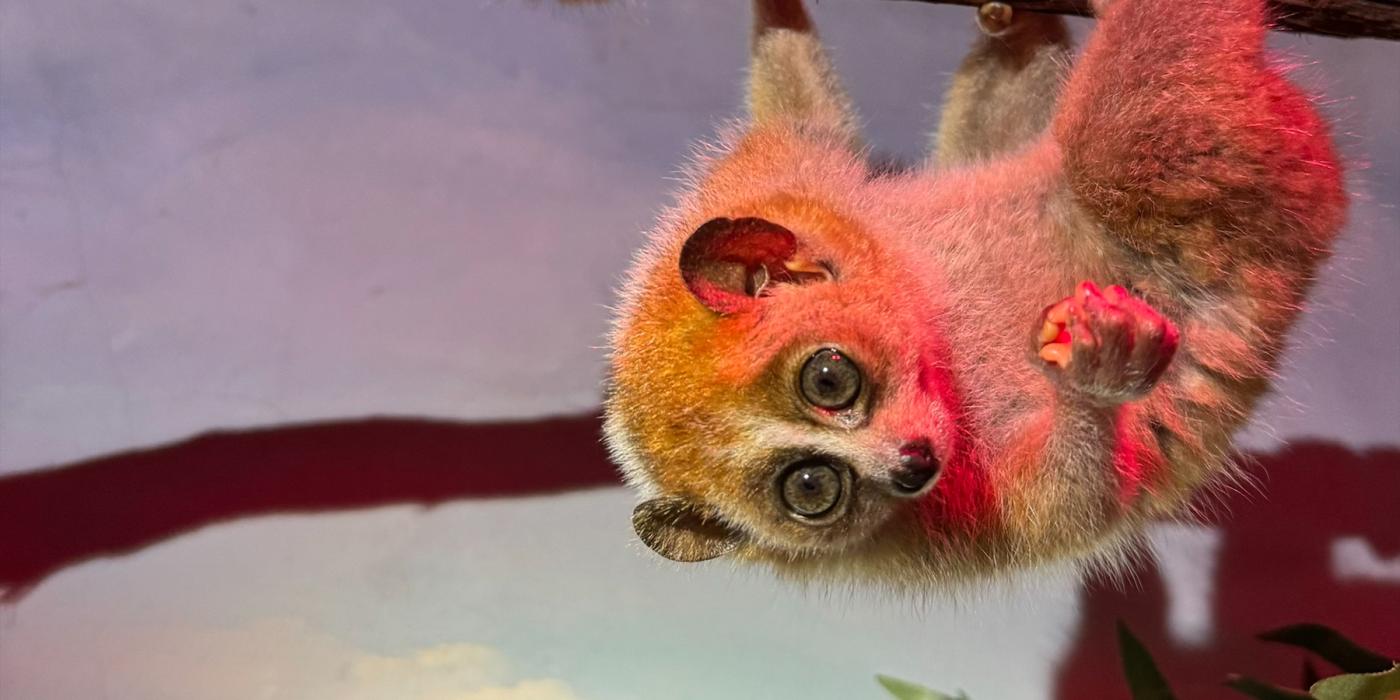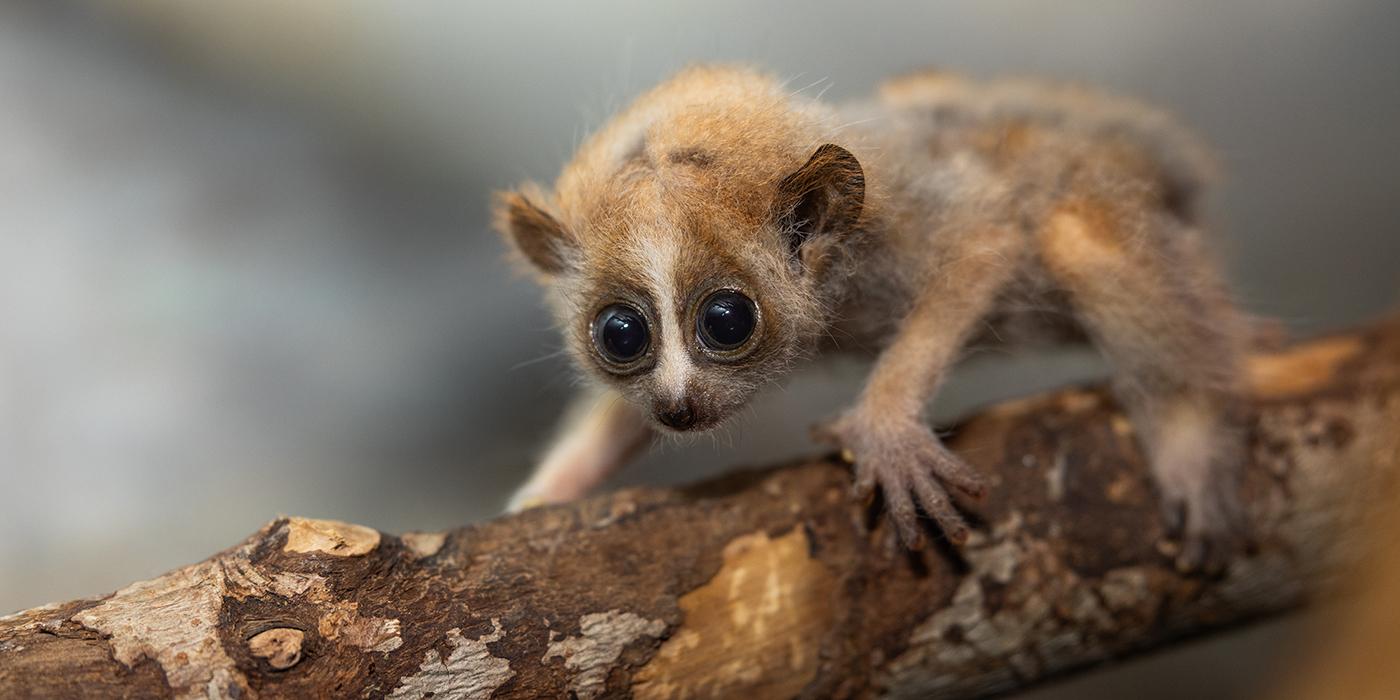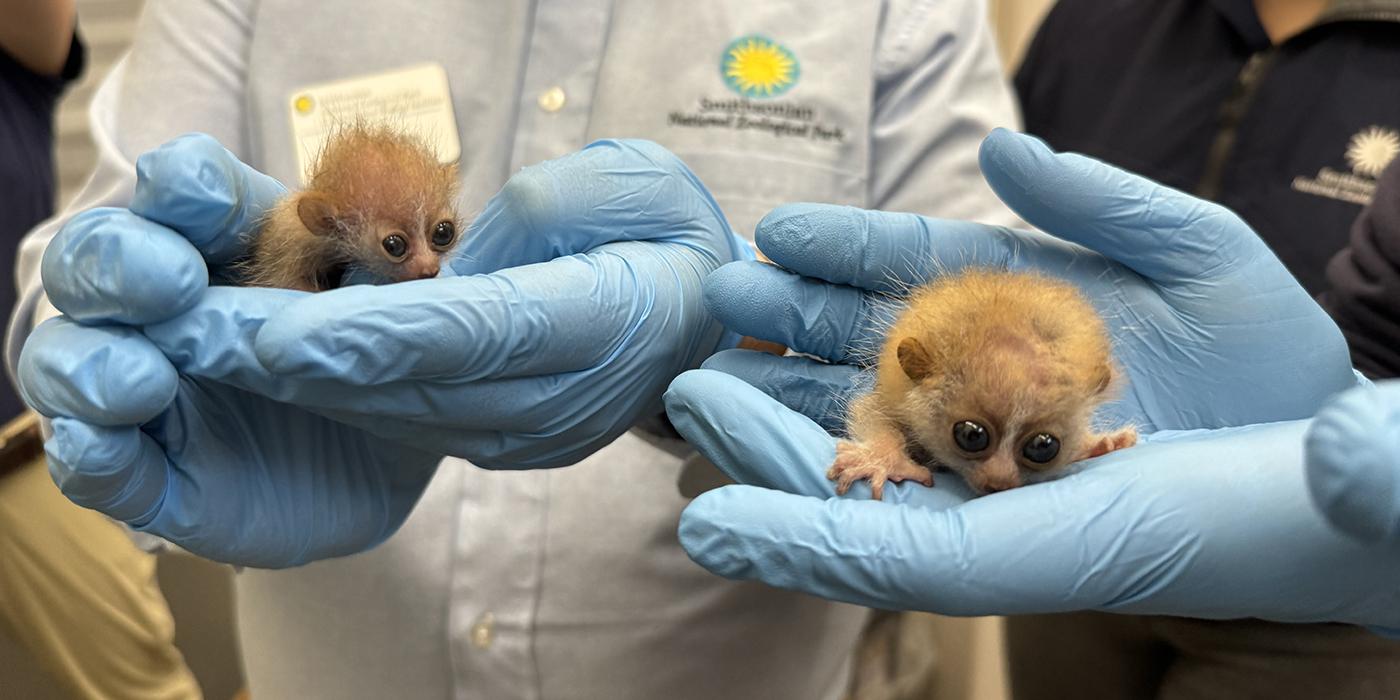Meerkats Are Born at Smithsonian’s National Zoo and Conservation Biology Institute
For the first time in 16 years, the Smithsonian’s National Zoo and Conservation Biology Institute (NZCBI) in Washington, D.C., is celebrating the birth of three meerkats. Keepers in the Small Mammal House reported for duty the morning of May 10 and observed that 5-year-old Sadie had given birth overnight. NZCBI had received a recommendation from the Association of Zoos and Aquariums’ Species Survival Plan (SSP) to breed Sadie and the pups’ 6-year-old father Frankie. These pups are the first offspring for Sadie; Frankie sired offspring previously at his former zoo. Meerkats live in groups called mobs that can include as many as 30 individuals, although the average mob size is around 10 to 15 individuals. Visitors can view NZCBI’s meerkat mob—which also includes Sadie’s sister, Stella—at the Small Mammal House.
In the wild, meerkat pups typically remain in an underground burrow for about three weeks. To encourage the meerkats to exhibit their natural burrowing behavior, a system of tubing—concealed within rockwork—runs along the outskirts of their habitat in the Small Mammal House. At the end of the tunnel, a nest box offers visitors a view of the meerkats’ underground sleeping chamber. The day Sadie gave birth, she surprised keepers by bringing her pups into the main exhibit space.
Animal care staff are leaving the mob to bond with and care for the pups without interference. They are closely monitoring the family and have observed Sadie nursing her offspring, which appear to be healthy and strong. Because keepers and veterinarians are not handling the pups, it may be some time before they can determine their sexes. Now 14 days old, the pups are starting to open their eyes and explore their habitat.
The SSP scientists determine which animals to breed by considering their genetic makeup, health and temperament, among other factors. Sisters Sadie and Stella came from the Brevard Zoo in Florida, and Frankie came from the Los Angeles Zoo in California. All three arrived at NZCBI in November 2022. Keepers describe all three meerkats as sociable, energetic and inquisitive. Frankie is laid-back and will take food gently from keepers’ hands. Sadie and Stella are quite bold and readily approach keepers. Initial “howdy” introductions among the three adults last winter went well, and they bred soon after meeting.
Native to southern Africa, meerkats live in the dry open plains, savannas and grasslands in Botswana, Zimbabwe, Mozambique and South Africa. Adults rotate sentinel duty throughout the day, looking out for predators. The International Union for Conservation of Nature considers meerkats as least concern.
# # #
Photo caption: The Smithsonian’s National Zoo and Conservation Biology Institute in Washington, D.C., welcomed three meerkat pups to mother Sadie and father Frankie in the Small Mammal House.
Photo credit: Ann Gutowski, Smithsonian’s National Zoo and Conservation Biology Institute
Related Species:
Image Gallery
